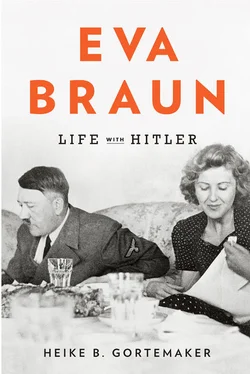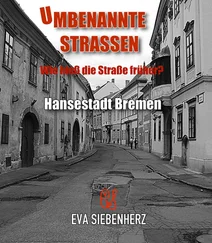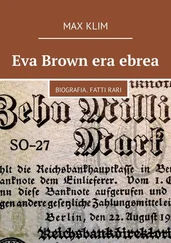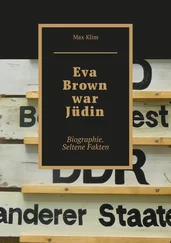4. RISE TO POWER AT HITLER’S SIDE
After 1931, the contact between Eva Braun and Hitler grew more intensive. Yet he also insisted at every opportunity, to fellow Party members, that he lived only for politics and therefore his private life belonged to the cause. Otto Wagener, for instance, the first chief of staff of the SA who spent 1929 to 1933 near his “Führer” and heard many of his personal conversations, recalled one long discussion in which Hitler explained to him that he could not ever marry: “I have another bride: Germany! I am married: to the German People and their fate!… No, I cannot marry, I must not.” 1Nonetheless, he met with Eva Braun more and more often, although the exact circumstances and precise development of their relationship remain unclear.
The “Führer’s” Long-Distance Lover
Heinrich Hoffmann, who saw Eva Braun almost daily and the leader of the Nazi Party often, remarked that Hitler himself “did not let on” about any close relationship at the time—either because he was not interested in the young woman or because he “did not want to say anything.” Hoffmann said he was convinced that Eva Braun became Hitler’s lover only “many years later.” 2His daughter Henriette von Schirach, in contrast, wrote in her memoir that the “love affair” between Braun and Hitler had already started by the winter of 1931–1932. 3Hitler’s housekeeper, Anni Winter, who lived in Hitler’s apartment at 16 Prinzregentenplatz along with her husband and another subletter, likewise claimed that Eva Braun became Hitler’s lover at the start of 1932. 4This version of events, which Nerin E. Gun retold without providing any exact sources, was later confirmed by the historian Werner Maser, relying on a personal communication from Anni Winter in 1969. 5
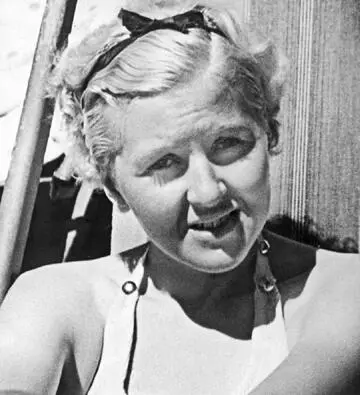
Eva Braun (undated) (Illustration Credit 4.1)
Thus the evidence suggests that their intimate relationship did begin in 1932. Hitler’s driver, Erich Kempka, also claimed immediately after the war that he had known Eva Braun “since 1932,” in which case she must have been traveling in Hitler’s entourage by then. 6Anna Maria Sigmund similarly claimed, referring to Albert Speer’s Spandau: The Secret Diaries , that a sexual relationship between Eva Braun and Adolf Hitler started in Hitler’s apartment at the beginning of 1932. 7Yet Speer says nothing of the sort, neither in his Spandau: The Secret Diaries nor in Inside the Third Reich—with good reason, since he was not yet a close colleague of Hitler’s in 1932. He was an independent architect in Mannheim and joined the NSDAP and the SA only in the previous year; in 1932 he was receiving his first assignments from the Party. 8
Nonetheless, in the entry of February 15, 1947, Speer recalls a private visit with Hitler eleven years in the past, in Munich, where Hitler had lived since October 1929 in the aristocratic Bogenhausen neighborhood, on the third floor of a majestic, baroquely Jugendstil corner building that today is a protected landmark. 9While Henriette von Schirach noticed primarily the “impressive paintings” and spoke of a “perfect apartment” where the furniture was “big, dark, and severe,” 10Speer was less impressed. He had risen during the course of Hitler’s Reich chancellorship to become his most important architect and representative for urban development in Rudolf Hess’s staff, and yet he noted in Spandau: The Secret Diaries:
The décor was petty-bourgeois: a lot of imposing oak furniture, glass-doored bookcases, cushions embroidered with saccharine sentiments or brash Party slogans. In the corner of one room stood a bust of Richard Wagner; on the walls, in wide gold frames, hung romantic paintings of the Munich School. Nothing suggested that the tenant of this apartment had been chancellor of the German Reich for three years. A smell of cooking oil and leftovers wafted from the kitchen. 11
Speer’s contemptuous description is obviously a product of his later view of this period. Eva Braun, on the other hand, who met with Hitler here, must have admired the apartment much as her friend of almost the same age, Henriette von Schirach, did. There were hardly any other opportunities for Braun and Hitler to be together undisturbed: she still lived with her parents, as was common at the time for unmarried women, and Hitler, too, did not live alone before fall 1931. His half-sister’s daughter, Angela “Geli” Maria Raubal, born on June 4, 1908, in Linz, lived with him at Prinzregentenplatz for two years after moving from Vienna to Munich in 1929. She failed to complete a course of study in medicine at the Ludwig Maximilian University, and had an affair with Hitler’s chauffeur at the time, Emil Maurice, which Hitler put a stop to. 12When she took her own life in her room, by shooting herself in the lung on September 18, 1931, rumors about Hitler’s relationship with his twenty-three-year-old stepniece immediately began to circulate. 13Incest and jealousy were spoken of as possible motives for the suicide, and there were even speculations about murder. The weapon, a Walther 6.35 caliber pistol, did belong to Hitler. But the police ruled out foul play. 14In fact, in view of the upcoming Landtag elections of April 1932, Hitler himself and the Gauleiter of Berlin and publisher of the Nazi propaganda newspaper Der Angriff (The Attack), whom Hitler named Reich Minister of Propaganda on April 27, 1930—Joseph Goebbels—used Raubal’s suicide to cultivate Hitler’s public image as the un-self-interested “Führer” and thus to conceal his private life as a human being.

Hitler with his stepniece, Geli Raubal, July 1930 (Illustration Credit 4.2)
Here is Hitler’s declaration only six days after his niece’s death, at an NSDAP gathering in Hamburg: “What has given me the most pains and cost me the most work is what I love best: our People.” 15And Goebbels, in his so-called “Diary”—actually a document always intended for posterity—recorded the following about a conversation with Hitler under the date October 27, 1931: “Then he told us about Geli. He loved her very much. She was his ‘good comrade.’ There were tears in his eyes…. This man, at the height of his success, without any personal happiness, committed only to his friend’s happiness. What a good man Hitler is!” A few weeks later, on November 22, Goebbels noted that the “Führer” had told him “about the women he loved very much” and “the one-and-only he could never find.” 16In fact, Hitler often said to his fellow Party members that he had no “ties to the world” anymore and belonged “only to the German People now.” He repeated in this context his old credo renouncing marriage, necessary in view of the political “task” that lay before him and the National Socialist “movement.” He had already stressed that he had to “deny himself” private happiness since “all his thoughts and efforts” belonged to the oppressed and despised German People. 17
But what did Hitler’s decision to remain unmarried have to do with his niece’s death? Didn’t such explanations only invite further speculation about the nature of his relationship with Geli Raubal? In fact, we can conclude from this pathos-laden exaggeration of Geli Raubal’s role, along with Hitler’s overheated explanations about the “religion” of marriage, that he was now more than ever concerned to conceal his personal life, which was starting to be discussed publicly, except insofar as he could manipulate it to his political benefit. With his followers, this trick was completely successful. Otto Wagener, for instance, a close member of Hitler’s staff for three years as head of the politico-economic division of the NSDAP, believed that he could see “just the man Adolf Hitler before him” during these apparently trustworthy communications. 18And Heinrich Hoffmann insisted, many years later, that Hitler’s “whole being” had changed after his stepniece’s death—that “a piece of Hitler’s humanity” died with her. His work was “now an exclusive pursuit of a single goal,” Hoffmann said. “Attaining power!” 19
Читать дальше
